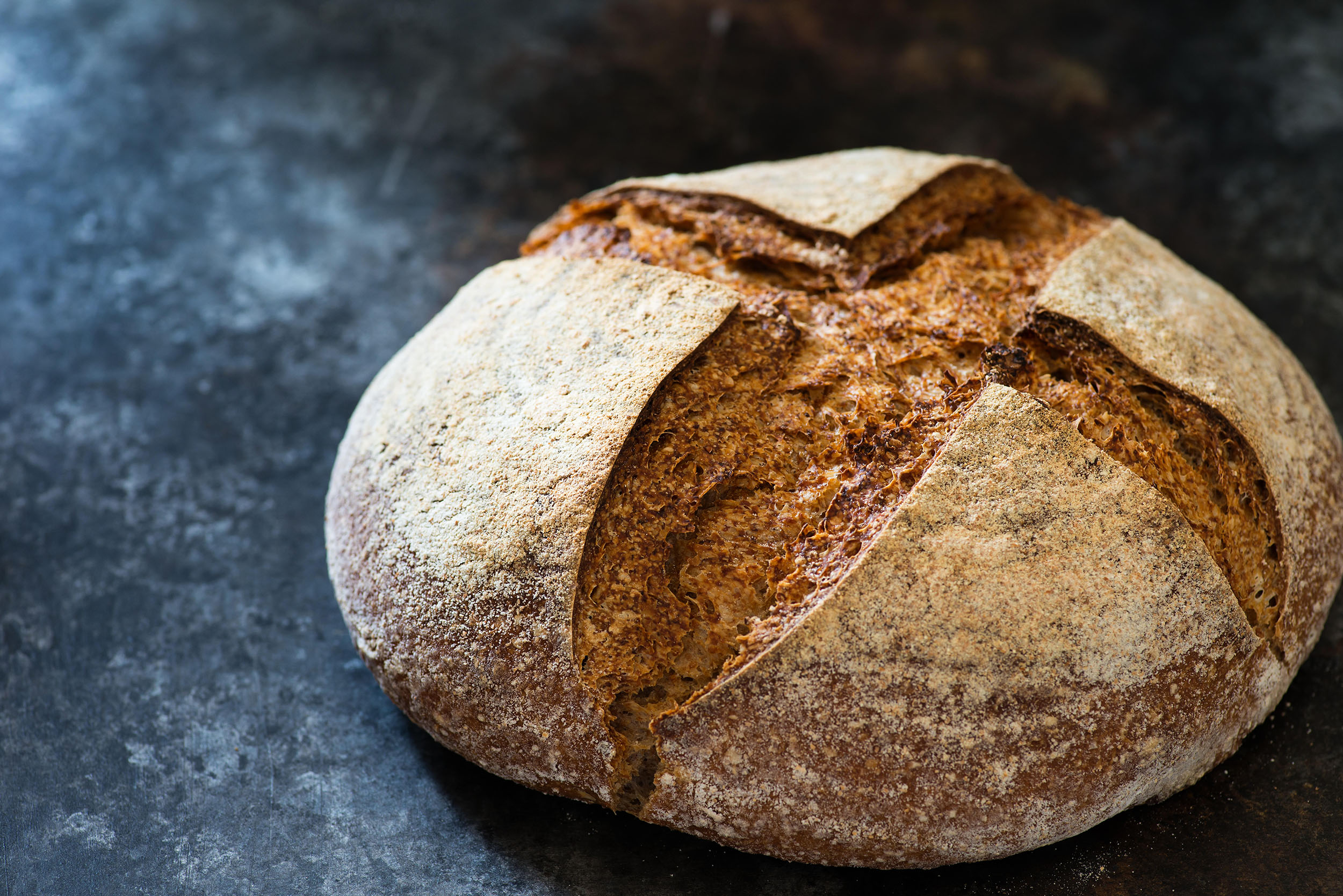Andrew Whitley’s sourdough bread recipe
Elisabeth Luard chooses Andrew Whitley’s sourdough bread as one of her greatest recipes ever


‘This is a passionate plea for a return to what bread ought to be-the staff of life, rather than the fluffy stuff of commercial bakeries,' she said.
'Once you bake your own, you'll never look back'
Andrew Whitley's sourdough bread recipe
Extract from Andrew Whitley's Bread Matters, published by 4th Estate Makes one small loaf
This recipe shows that you can use a rye sourdough to raise a predominantly wheat bread (which could be useful if you have only a rye sour on the go), although it will work perfectly well with a piece of wheat leaven instead. It really doesn't get much simpler than this.
Just take bit of old rye sour, mix it with wholemeal flour, water and salt, put it in a tin and let it rise. It uses a relatively small amount of initial sour or leaven, so the rise is slow. The process can be speeded up by using more starter, though this may result in a stronger-flavoured (more acidic) bread. The quantity given in the recipe is designed to make it possible to start the dough in the evening and have it ready to bake first thing in the morning.
Ingredients (makes one small loaf)
- 40g Rye Sourdough Starter
- 175ml warm water (at 35˚C, roughly body temperature)
- 250g stoneground wholemeal flour
- 4g sea salt
Method
To be on the safe side, use a rye sourdough starter that has been refreshed within the last fortnight. If you don't have time to do a full refreshment, which really amounts to the same as making a ‘production' sourdough, do a mini-refreshment by dispersing some of your very old sour in at least double its weight of wholemeal rye flour and water. It should be about 30˚C and as sloppy as runny porridge. Give it four hours in a warm place if you can. If absolutely nothing has happened in that time, it will need longer, but you can expect to see some bubbling after a few hours as the yeasts start to ferment.
To make the bread, disperse your rye sourdough in the water and then mix in the flour and salt. Knead to develop the gluten and adjust the moisture so that the dough is very soft. Any structure that you create by tight moulding will largely subside during a long proof, so do not expect a fine-domed top to a loaf such as this.
Place the dough in a greased small loaf tin, cover it and leave to rise. Do not put the tin in an especially warm place unless you want to hurry the process along. At an average kitchen temperature of about 20˚C, this dough should rise in about 10-12 hours.
Sign up for the Country Life Newsletter
Exquisite houses, the beauty of Nature, and how to get the most from your life, straight to your inbox.
Bake as for any normal tin bread, i.e. in a hot oven (about 230˚C), reducing the temperature by about 30˚C after 10 minutes or so. Since all the flour in this loaf has been fermented for a long period, the crumb will be markedly stickier immediately after baking than in a conventional leaven system such as French Country Bread, so it is better to leave it for a day before cutting it. Its keeping quality, however, is remarkable.
Even better, the science suggests that a long rise with lactic acid bacteria from the rye sour will neutralise almost all the phytic acid present in the wholemeal flour bran, making important minerals such as iron, magnesium, calcium and zinc more available to your body than they would be in an ordinary yeasted wholemeal bread.
Country Life is unlike any other magazine: the only glossy weekly on the newsstand and the only magazine that has been guest-edited by HRH The King not once, but twice. It is a celebration of modern rural life and all its diverse joys and pleasures — that was first published in Queen Victoria's Diamond Jubilee year. Our eclectic mixture of witty and informative content — from the most up-to-date property news and commentary and a coveted glimpse inside some of the UK's best houses and gardens, to gardening, the arts and interior design, written by experts in their field — still cannot be found in print or online, anywhere else.
-
 The treehouse of your dreams is for sale, and it even comes with a country house
The treehouse of your dreams is for sale, and it even comes with a country houseThe only thing more impressive than the treehouse at Springfield House are the recently re-designed interiors.
By James Fisher Published
-
 You've got mail: Royal Mail unveils eight folklore-inspired stamps
You've got mail: Royal Mail unveils eight folklore-inspired stampsThe Loch Ness monster is among Britain's mythical beings that appear on the stamps.
By Annunciata Elwes Published
